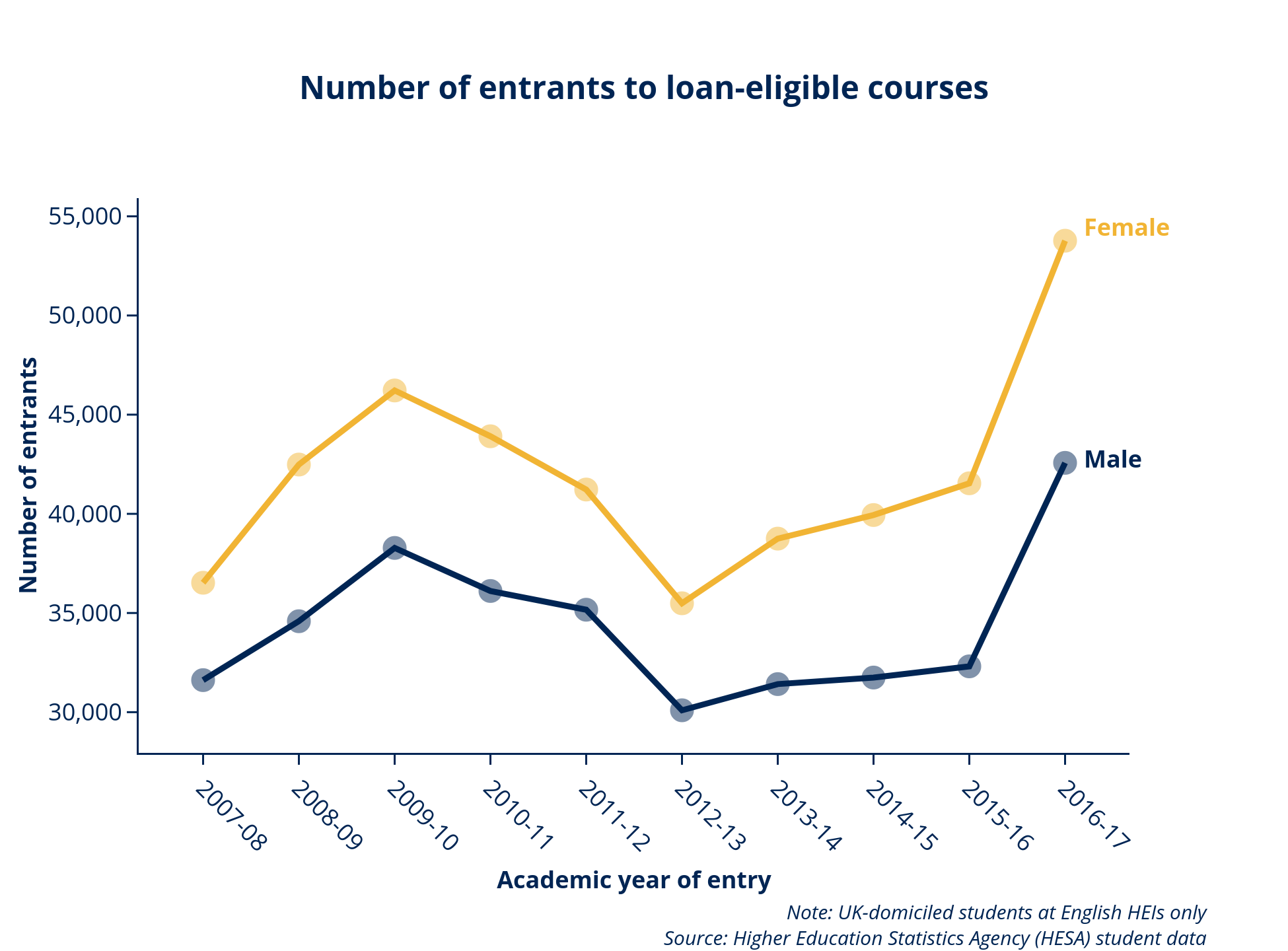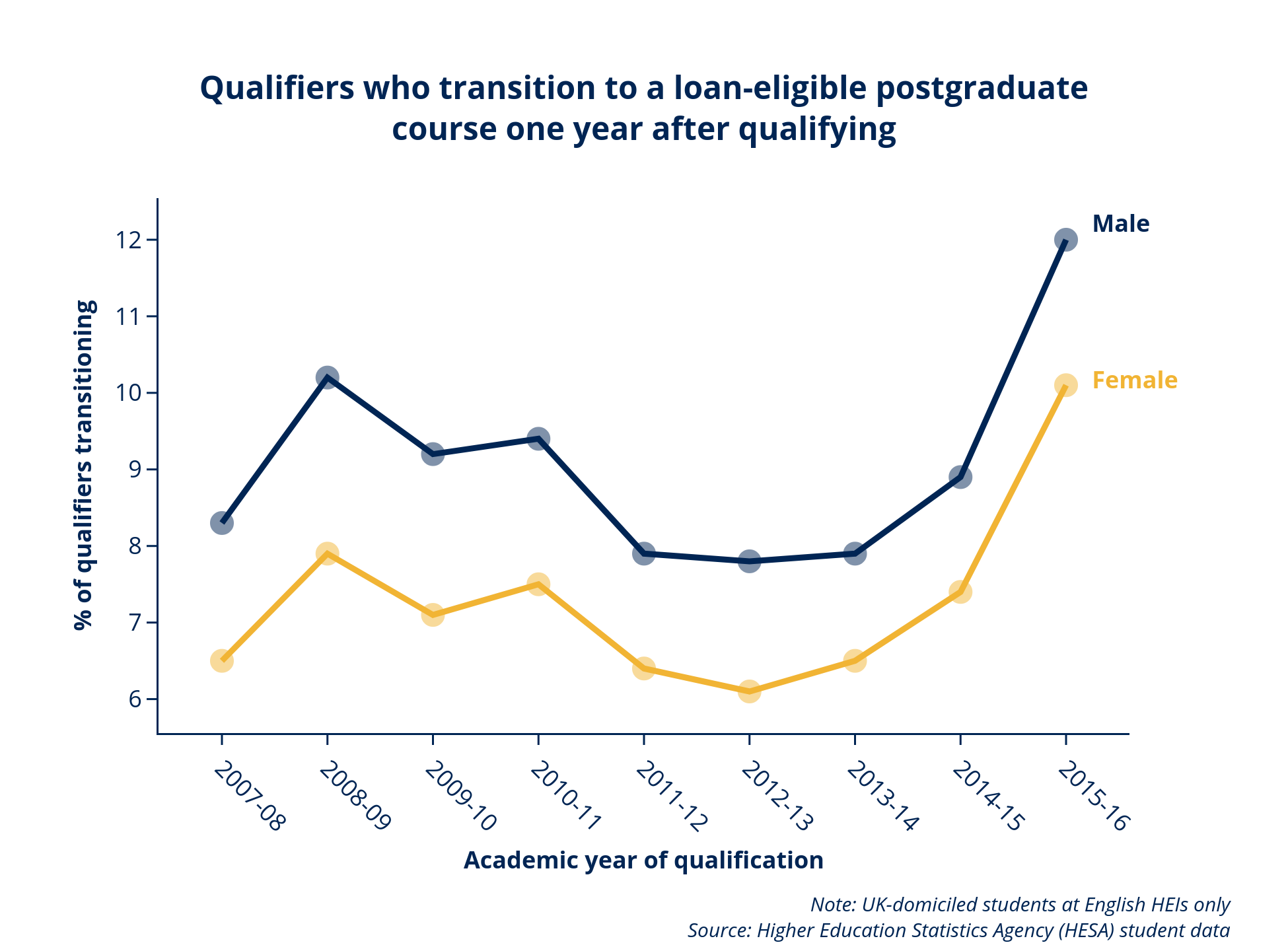The effect of postgraduate loans
Sex
Summary
The number of female students is still higher than male students even if the yearly increase and transition rates for male students are higher than for female students.
This is due to the number of female students in undergraduate degrees being much higher than for male students.
There have historically been more female students than male students in postgraduate education, but analysis has shown that male and female students are equally likely to realise their intentions to study at postgraduate level six months after graduation.
Entrants to eligible courses
There has been a 29 per cent increase in the proportion of female students entering eligible courses between 2015-16 and 2016-17, compared with 32 per cent of male students. However this has not affected the composition of the population, with female students still making up 56 per cent of the eligible entrant numbers in 2016-17, as in 2015-16.

One-year transition rates
Considering the one-year transition rates by sex, there has been a 3.1 percentage point increase in transition rates for male students. This compares with a similar increase (2.7 percentage points) for female students.

Loan take-up
Loan take-up was also very similar for male and female students, with 64 per cent of eligible male and female students taking out a loan.
Realisation of intentions
In 2014-15, 54 per cent of both male and female graduates realised their intention to undertake further study. For both groups this increased to almost 60 per cent in 2015-16.
Get the data
Describe your experience of using this website
